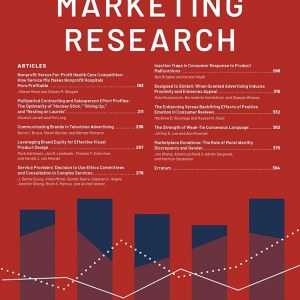
\de Jong\, M., Steenkamp, J., Fox, J. and Baumgartner, H. (2008). Using Item Response Theory to Measure Extreme Response Style inMarketing Research: A Global Investigation Journal of Marketing Research, 45(1):104--115.
-
Affiliated author
-
Publication year2008
-
JournalJournal of Marketing Research
Extreme response style (ERS) is an important threat to the validity of survey-based marketing research. In this article, the authors present a new item response theorybased model for measuring ERS. This model contributes to the ERS literature in two ways. First, the method improves on existing procedures by allowing different items to be differentially useful for measuring ERS and by accommodating the possibility that an item's usefulness differs across groups (e.g., countries). Second, the model integrates an advanced item response theory measurement model with a structural hierarchical model for studying antecedents of ERS. The authors simultaneously estimate a person's ERS score and individual- and group-level (country) drivers of ERS. Through simulations, they show that the new method improves on traditional procedures. They further apply the model to a large data set consisting of 12,506 consumers from 26 countries on four continents. The findings show that the model extensions are necessary to model the data adequately. Finally, they report substantive results about the effects of sociodemographic and national-cultural variables on ERS.